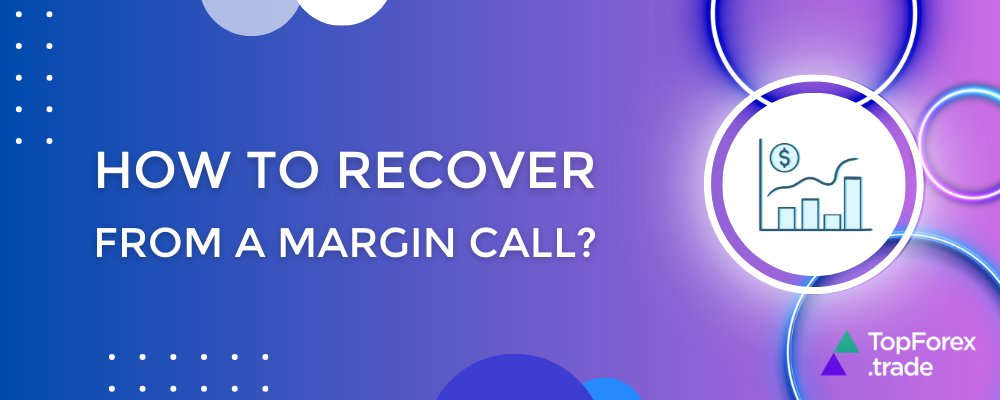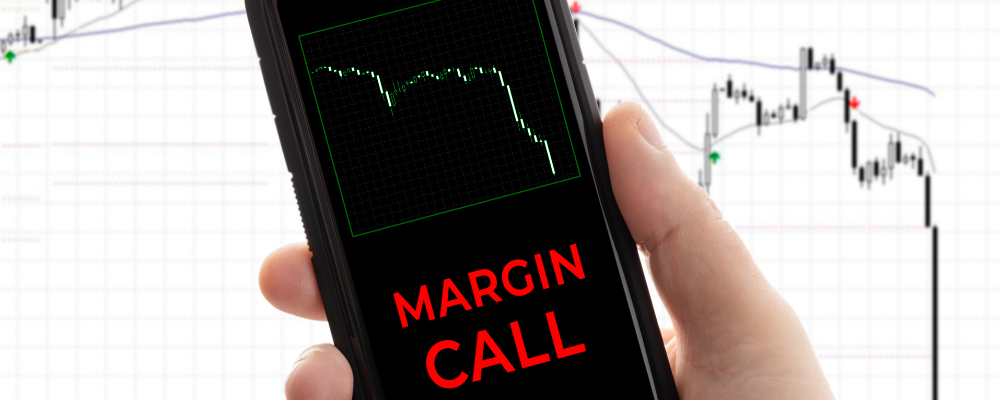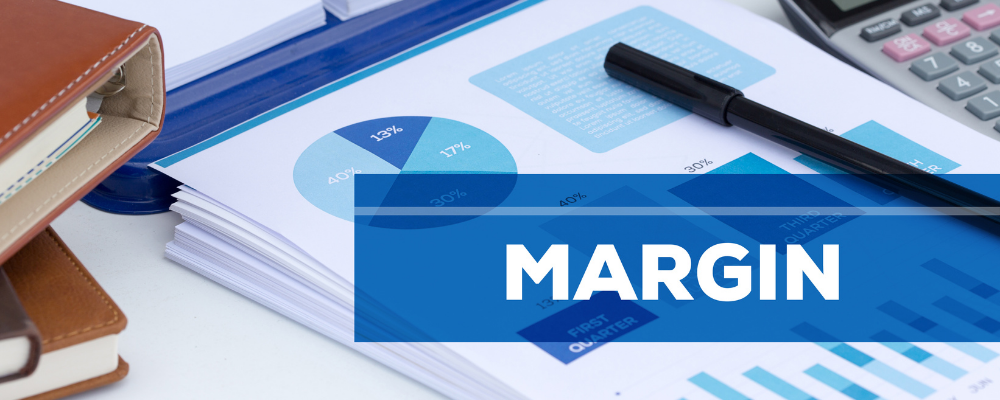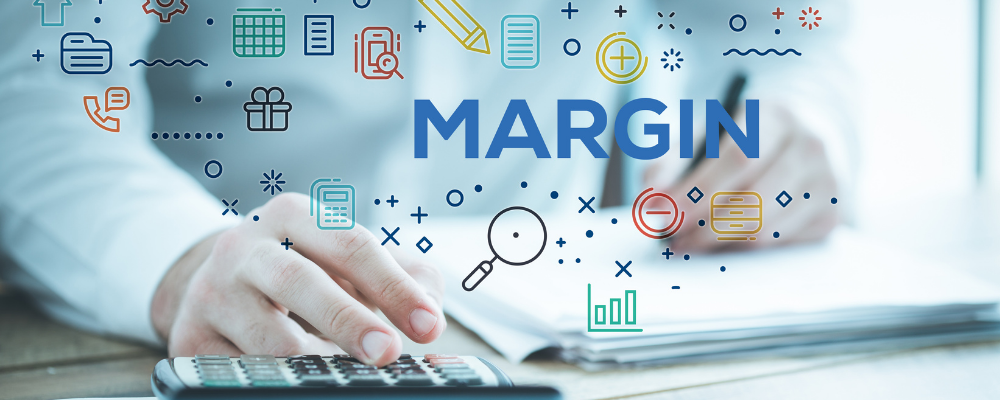Got a margin call? Steps to get back on track with Forex recovery tactics

When trading Forex, unexpected market moves or high leverage can sometimes lead to a margin call—a stressful situation where your account’s equity falls below the required margin level. A margin call can be a wake-up call, but it doesn’t mean your trading journey is over. You can regain control and potentially turn things around with the right strategies and recovery plan. This article will cover everything you need to know about surviving a margin call, from assessing your position to employing risk management techniques. Think of this guide as your Forex emergency kit—a step-by-step approach to help you navigate out of a margin call and strengthen your trading resilience for the future.
Key steps for recovering from a margin call

Here’s a specific, actionable guide for your Forex Emergency Kit, with steps to help you recover from a margin call and strengthen your strategy.
Reevaluate FX risk management tactics
A margin call often highlights gaps in risk management—whether it’s excessive leverage, no stop-loss, or oversized positions. For instance, if you risked 10% of your account on a single trade, a significant move against you could trigger a margin call. Reassess your risk by reducing the amount you risk per trade and using stop-losses strategically.
Example: Moving forward, you might decide to risk only 2% of your account per trade. With a $5,000 account, this limits your risk to $100 per trade, which can be managed by setting an appropriate stop-loss. If trading EUR/USD, setting a stop-loss 50 pips from entry would mean trading 0.2 lots to stay within that risk.
Close non-essential FX positions
Freeing up margin by closing poorly performing trades can ease the pressure on your account. For instance, if you have open trades in both EUR/USD and GBP/USD and GBP/USD is heavily in the red, close the GBP/USD position to regain margin flexibility.
Example: If GBP/USD is down by 200 pips and consuming $300 in the margin, closing it might prevent forced liquidations and let you focus on more promising positions. This margin breathing room allows you to assess your remaining positions more strategically.
Inject additional funds, if feasible
Sometimes adding funds is the quickest way to restore margin levels, but only do this if you have a clear recovery plan. For example, if your equity has dropped below the required margin by $200, adding $500 could stabilize your account, giving you time to plan without forced liquidations.
Example: If your margin requirement is $1,000 and your equity is at $800, a $500 injection will boost your equity to $1,300. This extra buffer can prevent liquidation and allow for a more thoughtful re-evaluation of your trades.
Analyze market conditions and trends
Look into the market dynamics that may have triggered your margin call. If you had an AUD/USD trade that suffered due to an unexpected rate cut by the Reserve Bank of Australia, reviewing similar economic events can help you better prepare in the future. Use TopForex.trade academy for more insights.
Example: Check the AUD/USD chart and use indicators like the Moving Average (MA) or Relative Strength Index (RSI) to see if a trend shift or overbought condition was missed. If RSI showed overbought levels before the rate cut, this might prompt you to be more cautious in similar situations.
Learn from the margin call and adjust strategies
Think of the margin call as an opportunity to improve your trading approach. For instance, if your margin call was due to a lack of diversification, consider spreading your risk by adding positions across different currency pairs.
Example: If you previously focused only on USD/JPY and EUR/JPY, try diversifying with pairs like AUD/CAD or GBP/NZD, which have less correlation to yen moves. This adjustment can reduce the risk of being affected by a single currency’s volatility.
Set realistic goals for recovery
Trying to recover quickly can lead to risky trades. Instead, set gradual recovery targets. For instance, if your account dropped from $2,000 to $1,200, aim to regain lost capital gradually with consistently smaller profits rather than high-risk trades.
Example: For a $1,200 account, a target of 5% growth monthly equates to a $60 gain. Achieve this with smaller position sizes and conservative trades, focusing on gradual recovery to avoid falling into another margin call.
Use a demo account for testing new strategies
Before live trading, test any strategy changes on a demo account. For instance, if you plan to use tighter stop-losses, a demo account allows you to evaluate how this adjustment performs without risking real capital.
→Pro tip: Choose reliable Forex brokers with demo accounts that are complete copy of a real ones.
Example: If you’re testing a trailing stop-loss based on the Average True Range (ATR), practice in a demo account to see how the strategy handles different market conditions and if it aligns with your trading style.
More tips for recovering from a margin call

Here are the useful tips for recovering from a margin call in concise points:
- Use lower leverage: Reduce leverage to 10:1 or 20:1 to minimize risk and exposure.
- Always use stop-losses: Protect your account by setting stop-loss orders that align with your risk tolerance (e.g., 2% of your account).
→More about Forex risk management tools.
- Don’t chase losses: Avoid making impulsive trades to recover losses. Stick to your trading plan.
- Diversify your trades: Spread your risk across different currency pairs or assets to limit the impact of a single trade.
- Reassess your trading strategy: Review your strategy if margin calls are frequent. Adjust position sizes and risk management.
- Use trailing stops: Lock in profits with trailing stops to protect gains while allowing price movement.
- Monitor economic events: Stay updated on news and economic events that could impact your trades (e.g., central bank announcements).
- Keep emotions in check: Manage emotions to avoid rash decisions. Take breaks when feeling emotional or frustrated.
- Gradually rebuild your account: Rebuild slowly with smaller, lower-risk trades rather than attempting a quick recovery.
- Regularly review your performance: Keep a trading journal to track trades, assess mistakes, and improve your strategy over time.
These quick tips can help stabilize your account and prevent future margin calls.
Case study: recovering from a margin call – example of a traders experience

Background: a retail forex trader, Sarah has been trading the EUR/USD pair with a $5,000 account. She had been using 50:1 leverage and trading with a 5% risk per trade, which meant she was risking $250 on each position. After several profitable trades, Sarah became confident and increased her position sizes without adjusting her risk management strategy. However, a sudden 200-pip drop in EUR/USD triggered a margin call when her losses exceeded the available equity in her account.
1. Reevaluating FX risk management
After the margin call, Sarah realized that her excessive risk and high leverage had put too much pressure on her account. To recover, she lowered her leverage to 10:1 and reduced her risk per trade to 1%, or $50.
New strategy: Only risking $50 per trade and using smaller position sizes to avoid overexposure.
2. Closing non-essential positions
Sarah had open positions in GBP/USD and AUD/JPY, both losing trades. She decided to close these positions to free up margin and reduce further risk.
Action taken: Closed GBP/USD for a $150 loss and AUD/JPY for a $100 loss, freeing up margin and stopping further loss accumulation.
3. Adding additional funds
Sarah injected $500 into her account to raise her equity level and avoid the risk of further margin calls. This additional buffer gave her more room to manage her trades carefully and recover gradually.
Action taken: Added $500 to her account to bring her equity back to $2,200, providing more margin to work with.
4. Using stop-loss and diversification
Sarah reviewed her trading strategy and decided to focus on lower-risk trades, setting stop-losses for every new position at a maximum of 2% of her account balance. She also diversified her trades to avoid overconcentration in EUR/USD.
Action taken: Started trading EUR/USD, GBP/JPY, and USD/CHF with 1% risk per trade and stop-losses set based on technical analysis.
5. Gradual recovery with small, steady profits
Sarah’s focus shifted from high-risk, high-reward trades to small, steady profits. Her goal was to regain her lost equity by achieving consistent 2-3% monthly returns.
Result: After a month, she had earned $200 in profit by sticking to her lower-risk trades and achieving small wins, growing her account balance to $2,400.
6. Reviewing and learning from mistakes
Sarah kept a trading journal throughout the recovery process. She tracked her trades, reflecting on the decisions that led to the margin call, and noted that her overconfidence in using high leverage and lack of risk management were major factors.
Action taken: Adjusted her strategy to always check market conditions before increasing position size and adhere to strict risk management rules.
The best brokers for Forex trading
After recovering from a margin call, choosing the right forex broker is key to your long-term success. A solid broker offers competitive spreads, low commissions, reliable platforms, and strong support. In this section, we’ll cover the best forex brokers for 2024 to help you make the right choice and keep your trading on track.
Pro tip: Before selecting a Forex broker, research those with the best reputation among real traders.
XTB Forex trading
XTB is a top choice for trading Forex and CFDs, operating in over 190 countries with strong security and transparency. Regulated by authorities like the FCA, CySEC, and KNF, XTB offers diverse trading options, including forex pairs, indices, commodities, shares, and cryptocurrencies. Its platforms, xStation and MetaTrader 4, are user-friendly and packed with advanced tools for traders. XTB provides various account types, including Standard and swap-free, and offers valuable resources like market updates, economic calendars, and webinars to support informed trading decisions.
Exness Forex trading
Exness is a leading Forex broker offering diverse trading options, including currency pairs, commodities, indices, and cryptocurrencies. Regulated by top authorities like the FCA and CySEC, Exness provides a secure trading environment with competitive spreads across Standard and Professional accounts. The broker supports popular platforms like MetaTrader 4 and MetaTrader 5, known for their user-friendly design and advanced charting tools, and offers customer support via email, live chat, and phone.
BlackBull Forex trading
BlackBull Markets is a trusted Forex broker with diverse trading options, including commodities, currencies, stocks, futures, indices, and cryptocurrencies. Regulated in Seychelles, BlackBull provides a secure trading environment with multiple account types, such as standard, prime, institutional, and Islamic (swap-free) accounts, plus a demo account for practice. BlackBull supports platforms like MT4, MT5, cTrader, Web Trader, TradingView, and mobile apps. They also offer specialized tools like BlackBull CopyTrader and BlackBull Shares, along with an educational hub featuring webinars and tutorials to help traders grow.
AvaTrade Forex trading
Founded in 2006, AvaTrade is a globally trusted Forex broker, serving over 300,000 clients and regulated by authorities such as the Central Bank of Ireland and ASIC. AvaTrade offers competitive spreads, multiple account options, and flexible leverage to suit various trading styles. It supports advanced platforms like MT4 and MT5, known for their powerful charting tools and fast execution. AvaTrade also provides essential risk management tools, like stop-loss and take-profit orders, along with educational resources such as webinars and market analysis to keep traders informed across markets.
OANDA Forex trading
Founded in 1996, OANDA is a reliable online broker known for strong customer service and a secure trading environment. OANDA offers competitive spreads and flexible leverage, enabling traders to tailor their positions to fit their strategies. You can trade on MetaTrader 4 or OANDA’s proprietary platform, OANDA Trade, which features advanced charting tools and support for algorithmic trading. OANDA also provides valuable tools like daily and weekly market analysis, forex news, and expert commentary to enhance the trading experience.
Related articles:
How to recover from a margin call - FAQ